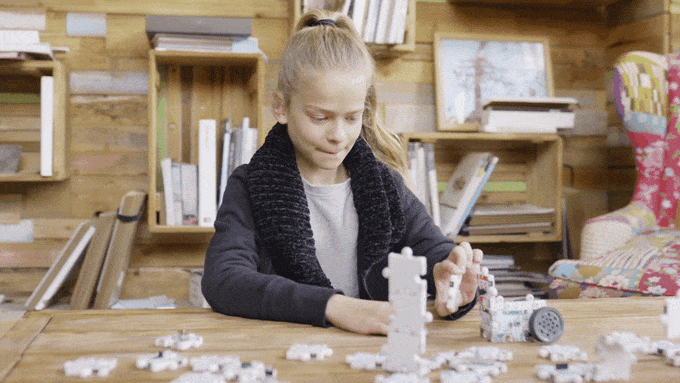Active Puzzle develops children’s skills in revolutionary ways

ActivePuzzle is an innovative technology company that mostly develops unusual products, that are both imaginative and educational, usually targeting children during their early advancement stages.
Recently, they’ve announced the release of the ActivePuzzle, an interactive robotic puzzle for kids. Designed to harness children’s enjoyment of puzzles and robots, and turn it into constructive learning experiences, ActivePuzzle teaches kids STEM concepts, logic and problem-solving skills in a method approved by parents and teachers.
What is ActivePuzzle?
ActivePuzzle is a game for building robots out of puzzles. Neither coding nor computer screens are involved: simply snap puzzle blocks together to form robots. Its simplicity and intuitiveness make ActivePuzzle a great platform for invention and innovation.
The ActivePuzzle game contains puzzle blocks, with each block serving a different function. One block stores the battery and supplies the robot with power; another holds a proximity sensor that allows it to “see” objects in front of it.
ActivePuzzle robots have no central processing unit, but rather work in a distributed manner based on the Braitenberg Vehicle concept: input pieces trigger adjacent output pieces. For instance, when a light sensor puzzle is connected to a motor puzzle, the motor will run faster as the light on the sensor gets more intense.
On the most basic level, what we like about this new “instructional” game is that through constructing and robots, kids maintain a sense of spatial and tactile awareness rather than the tunnel vision that accompanies standard 2d puzzles or video games.
These puzzles let kids warm up to technology in a friendlier way, by using their own language, one that they learn even in the years prior to talking: through games, in this case, through puzzles.

Expressing technology ideas using puzzles makes ActivePuzzle the simplest robotics on earth. ActivePuzzle doesn’t rely on video screens or pre-determined puzzle patterns – simply snap puzzle pieces together to create interactive robots. This makes ActivePuzzle a great platform for invention and innovation.
The best part about it is that ActivePuzzle is really easy to get the hang of too. Basically, if you can build a jigsaw puzzle, then you can create a robot.
The amazing simplicity of ActivePuzzle stems from the fact that puzzles are universal. ActivePuzzle represents multiple robot models in one, including a maze runner, a street light, a wake-up alarm, and a smart fan.
Each piece of these puzzles is used to instrument a certain function: the battery piece supplies electric power to the circuit, the proximity sensor “sees” objects, the motor drives a wheel or fan, etc. ActivePuzzle is for children aged 8+ and for those with young minds who want to build robots and to learn how they work.
What thrilled us even more is the added opportunity that it gives to educators. They can use ActivePuzzle to teach STEM: the game is very intuitive and simple to learn, and there are a large number of scientific and technological concepts that can be taught using ActivePuzzle. One important characteristic of ActivePuzzle is its being a gender-neutral game: the puzzle language makes girls feel natural and confident, and the game activities strengthen their self-efficacy.
